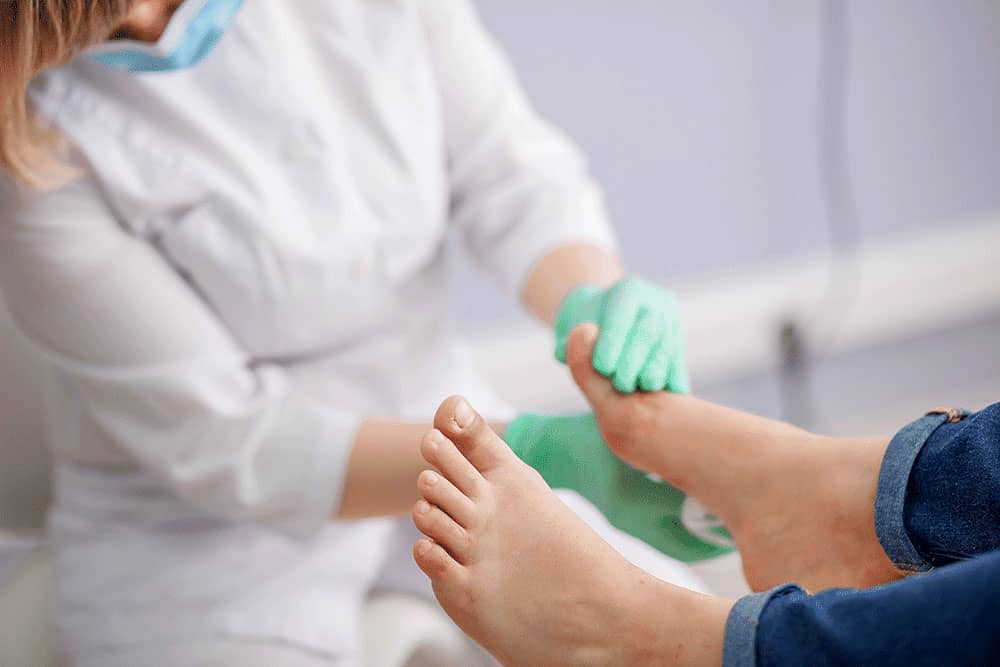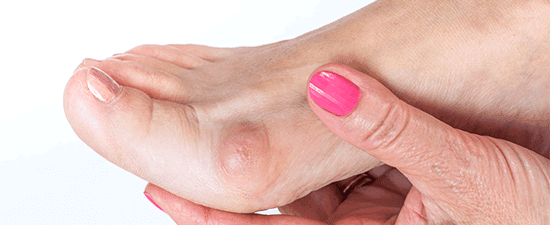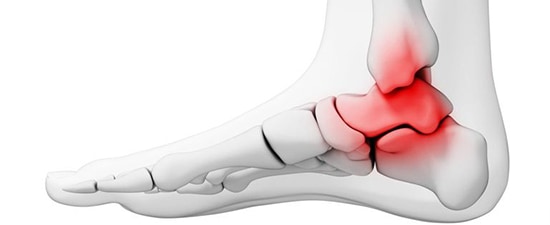- Home
- Foot & Ankle Conditions
- Cysts
- Plantar Fibroma Cysts
Plantar Fibroma Cysts: symptoms, causes and treatments
- Published 6/1/2018
- Last Reviewed 1/9/2024

What's a Plantar Fibroma Cyst?
A plantar fibroma is a knot of connective tissue in the arch of your foot, buried deep within the plantar fascia (the band of tissue that runs from the heel to the forefoot along the bottom of the foot). Also known as Ledderhose disease, a plantar fibroma nodule is made up of the same type of tissue that is found in ligaments.
A plantar fibroma is slow-growing and may develop on the sole of one or both feet. Luckily, these tumors are non-cancerous.
However, the mass usually will not go away without treatment. It's critically important that you have a proper evaluation of cysts that you discover to eliminate a more serious medical condition (such as cancer).
The condition is diagnosed most in the middle-aged and elderly population. Risk factors include diabetes, chronic liver disease, and epilepsy.
- What are the symptoms of a plantar fibroma cyst?
- What causes plantar fibroma?
- How to diagnose plantar fibroma
- What are plantar fibroma treatment options?
- University Foot & Ankle Institute (UFAI) is the best choice for plantar fibroma treatment
- How serious is plantar fibroma?
- Is it OK to massage plantar fibroma?
- Is walking bad for plantar fibroma?
- What will happen if you don't get rid of a plantar fibroma?
- Is plantar fibroma hereditary?
-
ABFAS® Board Certified in Foot Surgery at University Foot and Ankle Institute
Dr. Charles Kelman, DPM, is Board Certified by the American Board of Podiatric Surgery, as well as a Fellow of the America’s College of Foot and Ankle Surgeons. After attending California College of Podiatric Medicine, Dr. Kelman took his residency at Monsignor Clement Kern Hospital in Warren, Michigan.
Dr. Kelman, who entered into practice in 1980, specializes in forefoot surgery, sports medicine and rheumatology. He has volunteered as a Clinical Instructor at the Northridge Family Practice Residency Program since 1989. Dr. Kelman also donates his time at the Westminster Free Clinic.
Read Our Blog Articles About Cysts and Warts
 On time appointments, Dr. Jafary is calm when explaining problem and patient with my questions. I have recommended family membe...Virginia B.
On time appointments, Dr. Jafary is calm when explaining problem and patient with my questions. I have recommended family membe...Virginia B. Great care, I will return.Linda F.
Great care, I will return.Linda F. Terrific…couldn’t be happier!Joan G.
Terrific…couldn’t be happier!Joan G. As usual, the service as staff was excellent.Leroy H.
As usual, the service as staff was excellent.Leroy H. Please provide handicap parkingBarry S.
Please provide handicap parkingBarry S. Dr. Ambibola Johnson is awesome!Laurie S.
Dr. Ambibola Johnson is awesome!Laurie S. Great information on my condition. Non-surgery options were fully discussed and implemented. They were not satisfactory so surg...Donald M.
Great information on my condition. Non-surgery options were fully discussed and implemented. They were not satisfactory so surg...Donald M. I appreciate the care and timeliness of all my appointments I’ve had at UFAI. Gray, Lydia and the staff all are wonderful. Lydi...Edelmira G.
I appreciate the care and timeliness of all my appointments I’ve had at UFAI. Gray, Lydia and the staff all are wonderful. Lydi...Edelmira G. I love this practice. My experience at UFAI Institute has always been good. I have been a patient for almost a decade and as a ...Daniel J.
I love this practice. My experience at UFAI Institute has always been good. I have been a patient for almost a decade and as a ...Daniel J. Very greatfull for the doctor and stuffJesus M.
Very greatfull for the doctor and stuffJesus M. Doctor was very caringBrigitte S.
Doctor was very caringBrigitte S. Everyone is very nice and efficient-
Everyone is very nice and efficient-
Especially Dr Kelman. He takes very good care of me!!Claudia K.
-
 This foot condition is the new back pain — it’s everywhere. UFAI in the News.
Read More
This foot condition is the new back pain — it’s everywhere. UFAI in the News.
Read More
-
 Listen Now
What is Synovial Sarcoma? A Rare and Dangerous Cancer
Read More
Listen Now
What is Synovial Sarcoma? A Rare and Dangerous Cancer
Read More
-
 Listen Now
11 Common Foot Lumps and Bumps and What To Do About Them
Read More
Listen Now
11 Common Foot Lumps and Bumps and What To Do About Them
Read More
-
 Listen Now
Expert Insights On Treatment Options For Cystic Lesions Of The Talus
Read More
Listen Now
Expert Insights On Treatment Options For Cystic Lesions Of The Talus
Read More




